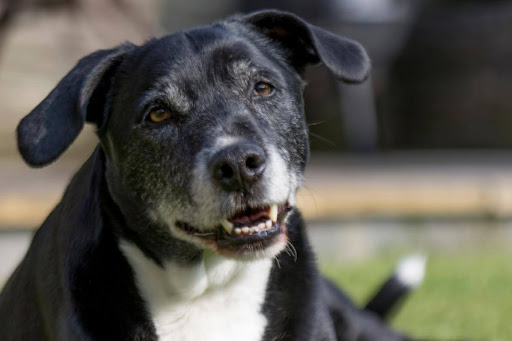When our furry friends get older, their health needs start to change, just like their unique personalities. Getting older for dogs isn’t just about more sleep and slower walks. It’s a big change that affects their health in many ways, so we need to pay extra attention and care.
Just like autumn leaves changing colors, an older dog’s life is both lovely and a bit sad, with noticeable changes in their physical and mental health. But with the right knowledge and tools, this stage can be filled with grace and comfort. It’s key to know about the common health problems that our senior dogs face. This knowledge is what makes their golden years as good and comfy as they can be.
Keep reading to discover how you can ensure your beloved pet enjoys their senior years in the best health possible.
At What Age Is a Dog Classified as a Senior?
Well, this is super important to know – it helps us understand what our furry friends need as they get older. Generally, a dog hits senior status around seven years old. But, it’s not that simple – the size of the breed matters a lot here.
Take large breeds, for instance – like Great Danes, Bernese Mountain Dogs, and Irish Wolfhounds – they age quicker and are often seen as seniors when they’re just five to six years old.
On the flip side, smaller breeds – like Chihuahuas – don’t reach seniorhood until they’re about eight to nine years old.
And it’s not just about age, genetics and the dog’s living environment play a part too. That means some dogs might show signs of getting old earlier or later than others. For dog owners, being aware of these differences is key to giving their furry friends the right care as they age.
11 Most Common Senior Dog Health Issues
When dogs get older, their health needs change a lot. It’s really important to know about the common health problems older dogs face, so we can make sure they’re happy and comfortable in their later years. So, let’s talk about the 11 most common health issues in aging dogs.
-
Cancer
First up is cancer. Unfortunately, about half of dogs over ten years old are at risk of this. Cancer happens when cells grow out of control, and it can appear in different ways. For example, mast cell tumors, lymphoma, hemangiosarcoma, and osteosarcoma – that’s bone cancer. Catching it early is key. While we don’t have the same advanced screening for pets as humans, there are tools like the Nu.Q Vet Cancer Screening Test that help with early detection.
Dogs that aren’t spayed or neutered have higher chances of getting mammary and testicular cancers. The symptoms vary, but they often include:
- Lumps or bumps on the skin,
- Wounds that don’t heal,
- Ongoing stomach problems,
- Unexplained weight loss,
- And trouble eating, breathing, or going to the bathroom.
To diagnose cancer, vets usually do a physical exam, blood tests, and sometimes X-rays. They might also take a sample of the tumor with a fine needle or a biopsy.
Treatment can be surgery, radiation, or chemotherapy, depending on the type and stage of cancer. Regular vet visits are super important for catching and treating cancer early, especially since it’s more common in older dogs. So, keeping an eye on your senior dog’s health is essential.
-
Heart Problems
Heart problems are a big issue for older dogs, with about 75% of them facing some kind of heart disease. Congestive heart failure (CHF) is especially common in senior dogs. This happens when the heart can’t pump blood well, causing fluid to build up around the lungs. You’ll see signs like:
- Coughing,
- Breathlessness
- Exercise intolerance
- Getting tired quickly,
- And not eating much, which can lead to weight loss.
Heart murmurs are another issue in older dogs, often starting around 5 to 6 years old. These murmurs — unusual sounds caused by abnormal blood flow in the heart — aren’t always because of age. Some are congenital, meaning the dog is born with them. And without regular vet check-ups, they might not be noticed.
To diagnose heart problems, vets usually use ultrasounds or chest X-rays. Treatments can include medications, changes in lifestyle, and sometimes surgery. Regular vet visits are super important for catching and managing heart problems early on.
-
Arthritis
Arthritis, specifically osteoarthritis, is a common issue in older dogs. It’s a kind of joint disease that gets worse over time, causing pain and making it hard for dogs to move around. This happens because the cartilage in the joints breaks down, and that leads to bones rubbing against each other.
Large breeds and overweight dogs are more likely to get this condition. You can tell a dog might have it if they’re less active, seem stiff after resting, limp, walk differently, struggle with stairs or getting on furniture, and show signs of pain.
And while we can’t cure osteoarthritis, managing it is definitely doable. The main goals are to ease the pain and slow down how fast the disease gets worse.
Treatment options include anti-inflammatory meds, joint supplements like glucosamine and chondroitin, and diet changes – especially adding omega-3 fatty acids. Regular vet visits, including physical check-ups and X-rays, are super important to keep track of how things are going.
Also, keeping your dog at a healthy weight is key to reducing stress on their joints. So, managing osteoarthritis is all about combining medical treatments with lifestyle changes to help your aging dog stay as comfortable as possible.
-
Kidney Issues & Urinary Incontinence
In older dogs, kidney problems and urinary incontinence are pretty common health issues. Kidney disease often starts when the kidneys can’t filter waste well, leading to chronic kidney failure. It can’t be reversed, but catching it early and managing it can make a big difference in their life quality.
Look out for signs like increased or decreased urination, heightened thirst, appetite loss, weight loss, and deteriorating fur condition. Regular blood tests are important for finding it early.
Urinary incontinence, especially in older female dogs, can happen because of weaker bladder muscles, their minds not being as sharp, or other medical conditions like urinary tract infections (UTIs). Signs to watch for are trouble peeing, dribbling urine, wet spots where they sleep, their back legs being damp, licking their back end a lot, and a constant pee smell.
Treating kidney disease might mean a special renal diet, medications, and fluid therapy. For incontinence, medications to help the bladder muscles, more bathroom breaks, or even diapers might be needed. It’s really important to see a vet for the right diagnosis and treatment, to make sure your senior dog is comfortable. And remember, good food and regular vet visits are key to keeping their kidneys healthy and managing urinary health.
-
Blindness
Blindness in senior dogs often comes from age-related issues or eye diseases like cataracts, and it’s tough but not impossible to handle. These furry friends can hide their vision loss well, thanks to their amazing ability to use their other senses.
But you can spot signs of their struggle – like trouble finding their toys or food bowls, bumping into things, being scared of jumping or climbing stairs, or acting more anxious or clingy. Eye changes, such as cloudiness or white spots, are also big clues that something’s not right with their sight.
Though you can’t reverse blindness caused by aging, catching it early is key. This allows your dog – a master at adapting – to rely more on their hearing, smell, and touch. Keeping things the same at home, like not moving furniture around, and using a leash outside can really help them. But, sudden blindness is a red flag and means you need to get to the vet, like, now. With your love and patience, these dogs with vision loss can still have a great life.
-
Hearing Loss
Hearing loss in older dogs is pretty common, just like it is in people when they age. This usually happens because of nerve damage inside the ear. You might notice your senior dog not following commands like before, sleeping through loud noises, getting startled easily, or not caring about sounds they used to love – think squeaky toys. Sometimes, it seems like they’re just ignoring you, but this could also mean they’re losing their hearing or even experiencing cognitive decline.
And while we can’t reverse hearing loss, catching it early is crucial. A vet can usually spot the signs. For a definite diagnosis, though, a neurologist might be needed. Adapting to this change is key. Dogs, with their super sense of smell, don’t rely on hearing as much as we do. This gradual loss gives both dogs and their owners time to adjust.
Training with hand signals and other visual cues can really help you communicate with a dog that can’t hear, making sure they still enjoy a good life. Regular vet check-ups are important too. They can help deal with any other health issues that might be making the hearing loss worse and keep your furry friend happy and healthy.
-
Cognitive Dysfunction/Dementia
Cognitive Dysfunction Syndrome (CDS), similar to dementia in humans, frequently affects older dogs. It shows up in various ways like confusion, disorientation, unnecessary barking or whining, less interaction with family or other pets, moodiness, anxiety, inconsistent sleeping patterns, accidents in the house, and doing the same things over and over. These symptoms can change—some days might seem better than others.
Often mistaken for just getting older, CDS signs can look a lot like other health issues like loss of hearing or sight, or hormone problems. That’s why a detailed check-up by a vet is essential. While there’s no cure for CDS, there are ways to help your dog live a better life. Treatment could include:
- Medications specifically for CDS
- Drugs for specific symptoms, like anti-anxiety medications or sleep aids
- Nutritional supplements, such as fatty acids
-
Obesity
Obesity in older dogs is also a major problem – more than half of dogs in the U.S. are overweight. This often happens because, as dogs age, they move less and their metabolism slows down. Carrying extra pounds can make other health issues worse, like diabetes, heart disease, and joint problems.
It’s super important to keep an eye on your dog’s weight and body shape. A healthy dog should have a visible waist from above, ribs that you can feel but not see, and an abdomen that tucks up at the side.
To tackle obesity in senior dogs, their diet needs to change to meet their lower calorie needs. And consulting with a veterinarian is the best way to get advice on what your dog should eat and how much exercise they need. Even if they can’t go for long walks, several short walks can do the trick in keeping them physically fit.
-
Liver Disease
Liver disease in older dogs often shows up with signs that are easy to miss but vary widely. You’ll see signs like loss of appetite, weight loss, increased thirst and urination, dark urine, lethargy, and jaundice (yellowing of the eyes, tongue, or gums).
In the later stages, symptoms might include confusion, seizures, or a swollen belly because of fluid buildup. This organ, the liver, is crucial for many important body functions. It can be hit by different things like infections, toxins, certain drugs, liver growths, or sometimes the cause is just unknown.
Liver disease usually pops up around the age of seven. Figuring out what’s wrong and treating it depends on what’s causing the problem. When you take your dog to the vet, they’ll do a full health check and some tests.
Managing liver disease often means changing the diet and staying away from meds that are bad for the liver. Spotting the little changes in how your dog acts and looks is key to catching this early. That’s vital for getting them the right treatment and keeping them happy and healthy in their golden years.
-
Diabetes
Diabetes in older dogs is a hormonal issue, where the body doesn’t handle insulin well – either it’s not making enough or not responding to it properly. This often starts showing up when dogs are around 7 to 10 years old.
Key signs include drinking more water and urinating more, feeling hungrier but losing weight, and getting infections often, like urinary tract infections. This condition can also cause cataracts, which means the eyes get cloudy.
Certain dog breeds, such as Samoyeds and Miniature Schnauzers, are more likely to get diabetes, and it’s more common in female dogs. While there’s no cure, diabetes needs lifelong management, mainly through insulin shots.
And it’s crucial to catch it early for effective treatment. That’s why dog owners need to be really observant about any changes in their pet’s behavior and health and talk to a vet if they think their dog might have diabetes. Regular check-ups and treatment can help dogs with diabetes live a good life.
-
Dental Issues
Dental issues are surprisingly common in dogs – in fact, over 80% of pooches over three years old have them. And for older dogs, these problems only get worse. Periodontal disease, which means infections or damage to the structures supporting teeth, can cause some nasty complications. These include gum infections, bone loss, and even systemic issues if bacteria get into the bloodstream.
Symptoms that your furry friend might have dental issues include bad breath, difficulty chewing, favoring one side of the mouth, pawing at the mouth, excessive drooling, gum bleeding, or discharge.
Prevention, as they say, is better than cure – this holds true for canine dental health too. Effective prevention involves daily brushing with dog-friendly toothpaste, maintaining a healthy diet, and regular check-ups with the vet. And those early signs, like tartar build-up and gingivitis? They can lead to serious oral decay if ignored.
Regular oral hygiene is essential – it’s the key to preventing these issues and ensuring your senior dog’s overall health and comfort. Just like in humans, a dog’s dental health impacts their entire well-being. Those who prioritize their pet’s dental hygiene can help their dogs lead happier, healthier lives.
Conclusion
Wrapping it up, if you’re a dog lover or an owner, it’s super important to know about the health problems older dogs often face. And remember, your senior furry buddy depends on you for their health and happiness. From joint pain (like arthritis) to tooth troubles (like dental disease), each issue we’ve talked about needs your quick and careful attention. By staying informed, you can make sure your old dog has a cozy and respectful golden age. Regular vet visits – those check-ups are crucial – a diet that fits their needs, and your affection can really help in handling these problems that come with age.
So, let’s make sure we love and look after our faithful pals in their twilight years, giving them the same joy and comfort they’ve always given us.
972-372-9225





